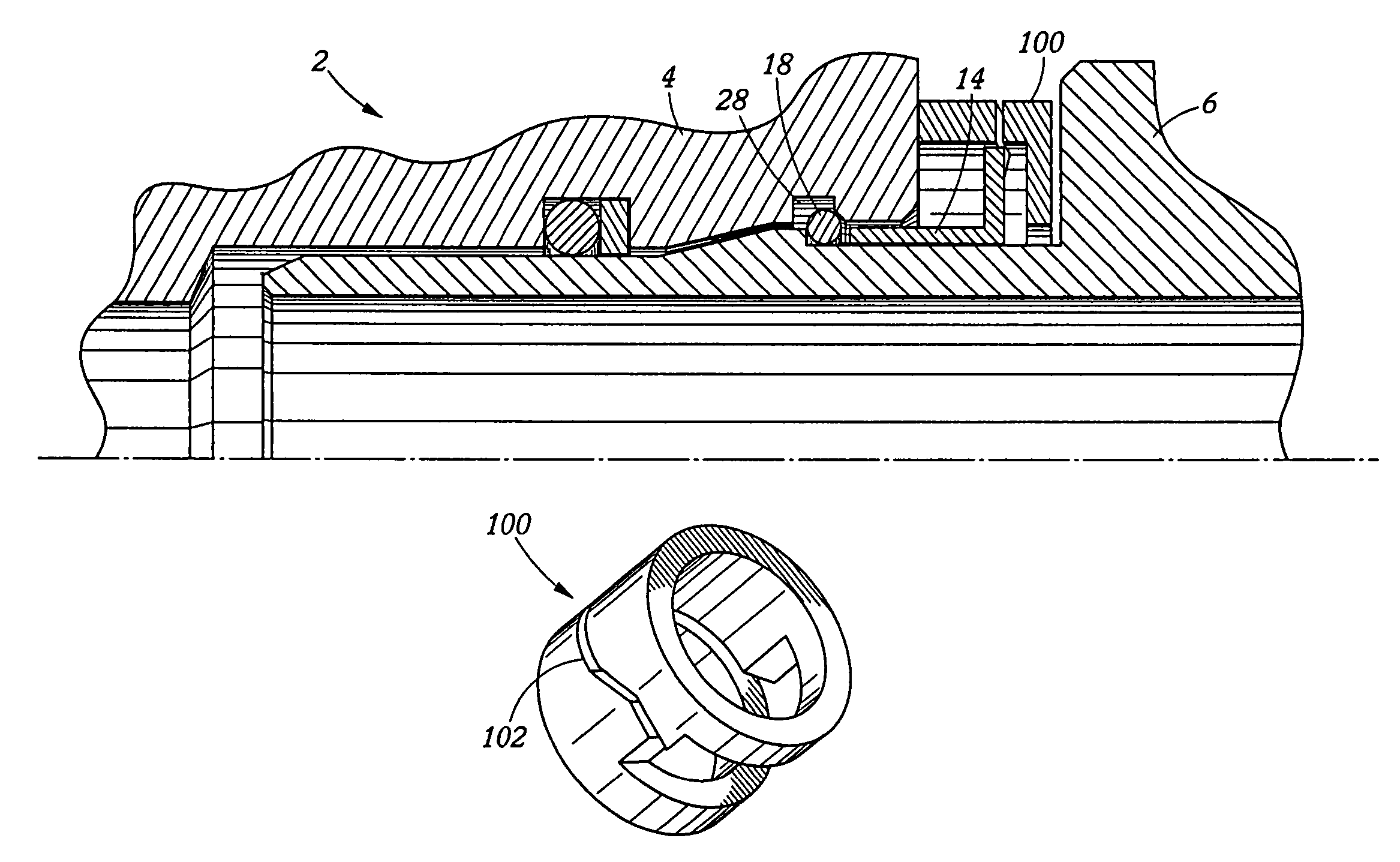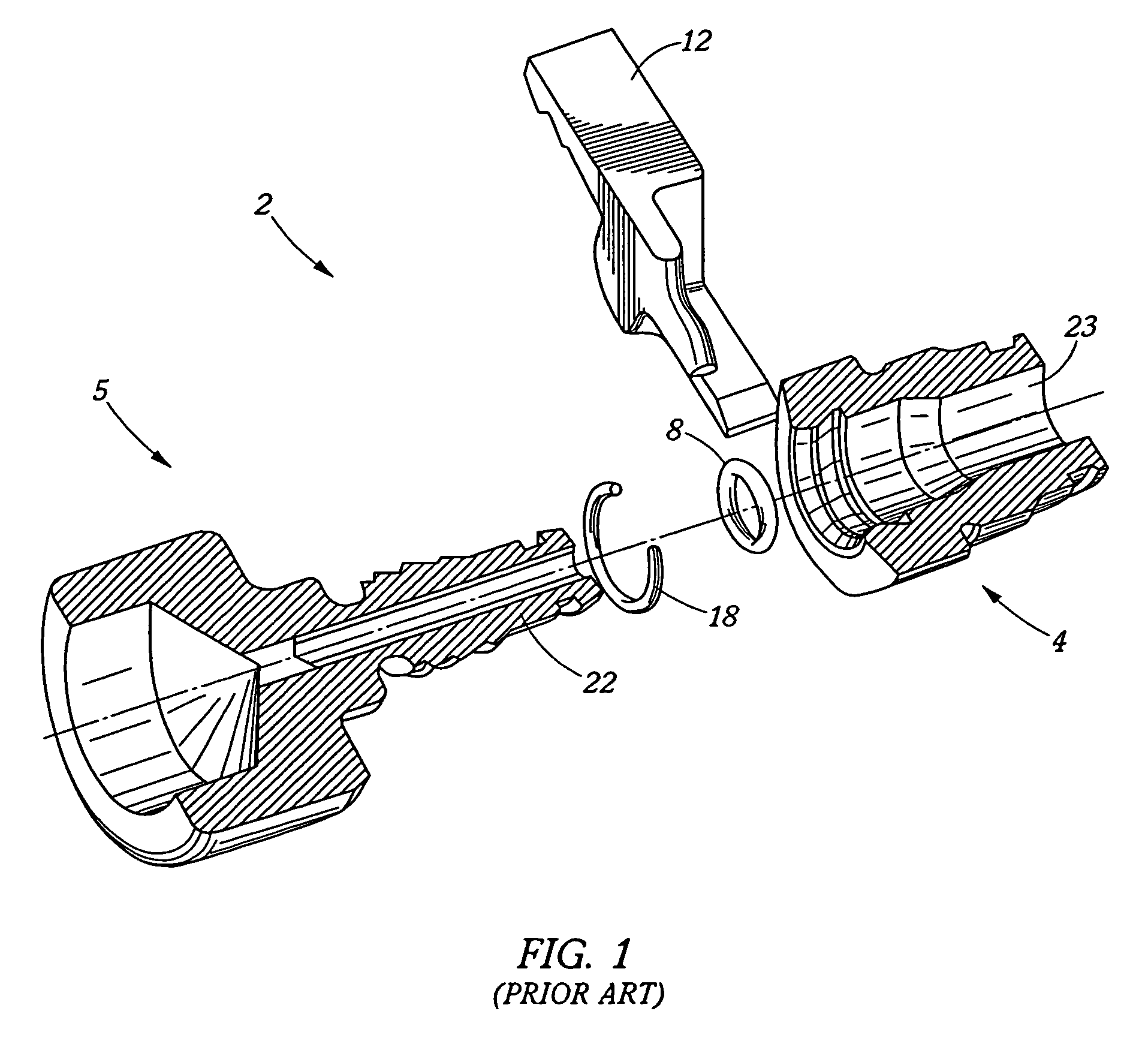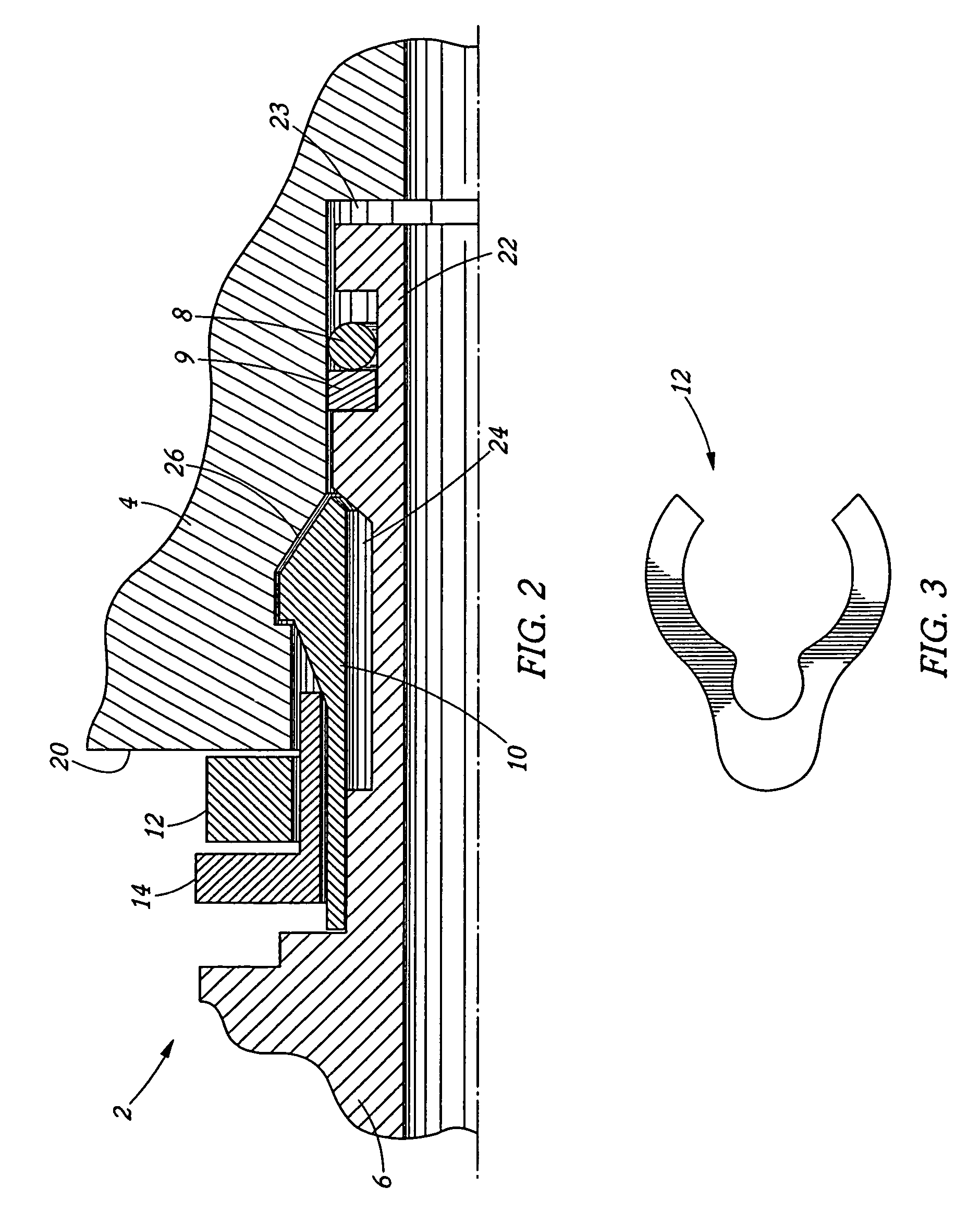Quick connect coupling with disconnect lock
a technology of disconnect lock and coupling, which is applied in the direction of couplings, pipe elements, engine seals, etc., can solve the problems of couplings and achieve the effect of reducing the chance of hose kinking
- Summary
- Abstract
- Description
- Claims
- Application Information
AI Technical Summary
Benefits of technology
Problems solved by technology
Method used
Image
Examples
Embodiment Construction
[0088]Referring now to FIG. 1, an example of a prior art quick connect coupling 2 is shown. More specifically, hydraulic and pneumatic quick connect coupling 2 generally includes a female portion 4 that is a cylindrical shaped member with an inner diameter and an outer diameter such that liquids and / or gases may pass freely therethrough. Quick connects also include a male portion 6 for operable engagement with the female portion 4. The male portion 6 generally has at least one groove where at least one seal 8 may be interconnected. The inner diameter of the male portion 6 is generally less than the inner diameter of the female portion 4 of the coupling to allow selective engagement and disengagement. In order to maintain the integrity of the quick connect coupling 2, a space 12 may be used to prevent unwanted deflection of the male portion 6 into the female portion 4. More specifically, once a locking snap ring 18 is deformed, it engages a cavity in the female portion 4, thus preven...
PUM
 Login to View More
Login to View More Abstract
Description
Claims
Application Information
 Login to View More
Login to View More - R&D
- Intellectual Property
- Life Sciences
- Materials
- Tech Scout
- Unparalleled Data Quality
- Higher Quality Content
- 60% Fewer Hallucinations
Browse by: Latest US Patents, China's latest patents, Technical Efficacy Thesaurus, Application Domain, Technology Topic, Popular Technical Reports.
© 2025 PatSnap. All rights reserved.Legal|Privacy policy|Modern Slavery Act Transparency Statement|Sitemap|About US| Contact US: help@patsnap.com



